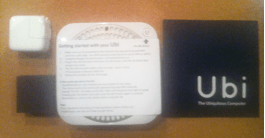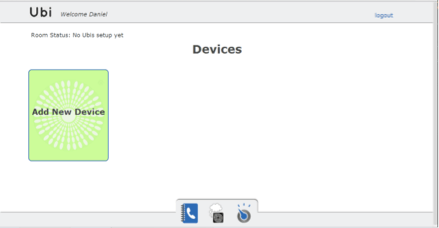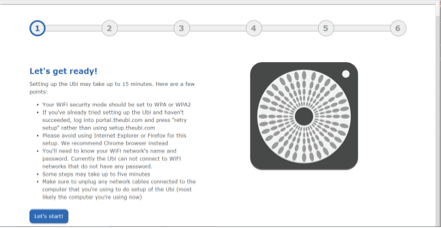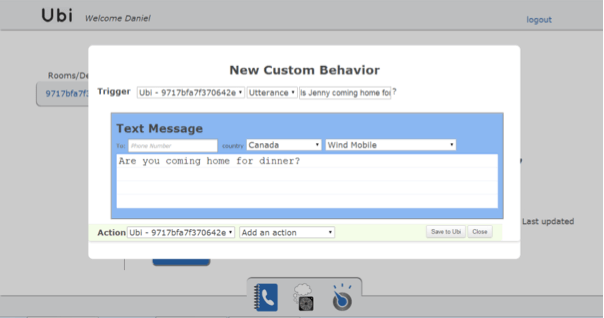
Unboxing Ubi: A Usability Review
For most, consumer products are one of the first touch points with the user which occurs at the unboxing. Like children at Christmas, the user will most likely be eagerly anticipating opening the box, unwrapping the product and start using their new toy. However, a poor, out-of-the-box experience, will result in user frustration, and the product being returned, or shelved and never used. So, as part of a new series, we’ll be writing a usability review for the out-of-the-box experience of new products.
The first product I’ll be reviewing is the Ubi, a device that you can plug into any outlet, connect to your home Wi-Fi network and issue voice commands, similar to Siri, or Ok Google. It is just one of many devices that have derived on the market with the goal of creating smart homes. The Ubi was just one of many projects that I have supported through.
Kickstarter and was looking forward to trying out the unit in my kitchen where I could get it to play music on command, or text my wife if she was coming home for dinner while I cooked. I purchased a beta unit, however, in a period when software is forever in beta, there are still high expectations for what is delivered.
Packaging
The package design is simple and monochromatic, though the font choice could be improved. The back of the box has some simple description of what the Ubi can be used for, the specs, the requirements, etc. From a usability perspective, it has the information I need, but from a visual design perspective, the information has no hierarchy, so it is a little more difficult to focus and read.
The box contained the Ubi, the power adapter, and a quick start guide, as well as a sticker with some instructions on a sticker on the front of the Ubi. Overall, I would say that the size of the packaging seemed a bit much given the size of the actual Ubi unit. With some clever re-arrangement, the manufacturer could probably reduce the packaging by 30-40%.
Rating: 3 out of 5
Likes: Clean, simple,
Dislikes: Excessive packaging, poor font choice
Set-up
With a quick review of the quick start guide book and instructions on the device I was ready to get Ubi setup. The first step was to create an account on the Ubi portal, so that I could monitor my house, since the Ubi has a range of sensors like temperature, humidity, light, sound, from any browser. Once my account was setup, I could log into the portal and start the installation wizard. First minor annoyance was that I was viewing the portal from my laptop, and frequently found that the instructions that appeared in a popup didn’t fit very well, and could be simplified even further with the better use of accompanying graphics.
The biggest confusion was step 6 after I paired the Ubi with my wi-fi connection. The instructions say that the Ubi will provide an audio clue that the setup is done and I would get redirected back to the portal, but after 5 minutes nothing has changed. So I restarted the setup process and at step 6, the device again would not complete after 10 minutes. Testing of the Ubi did find that the system was connected to the network and returned requested information. So, I never was able to get redirected, but I was able to start using the Ubi. Another odd behaviour which may have resulted from the setup, but my laptop could no longer connect to the wi-fi network until I restarted both the laptop and modem.
Rating: 2 out of 5
Likes: Wizard approach with sufficient details to guide user, start guide sticker on the Ubi.
Dislikes: wasn’t clear at first that I needed to create an account for the Ubi portal at first, installation failed to indicate when it was completed successfully, possible, link between Ubi setup and subsequent failure to connect to the internet by the device used to setup Ubi.
Using the Ubi
Using the Ubi for simple tasks (current time, temperature, word definitions, etc.) is pretty straightforward. You let the system know you are about to give it a command by saying “Ok Ubi†and a blue light and audio cue indicates that the Ubi is awake, and then a green light, 0.5-1 second after the blue, indicates the system is ready for the command. This works if you are looking at the Ubi when you want to provide instructions, otherwise you’ll have to get use to the pause before you provide the rest of the command. Once you’ve adapted to the rhythm of the voice commands using becomes easier but the fact that the user needs to adapt to the technology highlights that the system is not quite ready for natural interaction.
To get more out of the Ubi you need to provide some inputs. The first thing I tried to do was bring in my contacts. Unfortunately, this feature is disabled on my unit, so I’ll need to manually add contacts for now. I added the email address and phone number for my wife and tried to send her an email. After several confused responses from Ubi I realized that I needed to train the system to recognize her name. This may be fine for a couple names, but can be problematic if I have to train all my contacts.
Another feature of the Ubi allows you to create custom behaviour. I was able to create some custom responses to simple voice commands. With the more complex commands, I was able to dictate emails but was unable to send a text.
Rating: 2 out of 5
Likes: ability to create custom behaviours, range of sensors for monitoring conditions in the room, command logging helps understand how the system is interpreting my commands
Dislikes: no ability to import contacts, inconsistent behaviour of voice recognition, need to adapt speaking pattern to work with the system
Overall Usability Review
To sum up this usability review, the current portal UI needs some minor tweaks to improve the navigation but allows the user to accomplish the main tasks to managing individual Ubi units. The Ubi is at the same level of most voice interaction systems where the user needs to adapt to the technology and the intelligence of the system is still improving. For example, I liked that when I asked, Ubi was able to find and stream jazz music, but the system should be smart enough to realize that I want music to play for longer than 15 seconds without needing to provide additional commands. Although the guide indicates that the Ubi learns, I haven’t seen any improvements that were not as a result of me changing how I interact rather than from the Ubi learning what is expected.
Having said that, I’m not giving up on Ubi and hopefully with firmware upgrades the Ubi can continue to improve. So for the near future, Ubi has a place in my kitchen.
Comments
Related Articles








